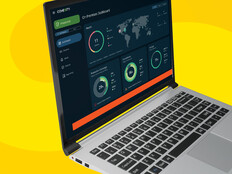IT Modernization Improves Private Sector Engagement
In late 2022, the U.S. Agency for International Development was awarded $5.9 million in TMF funds to build an enterprisewide CRM system to centrally manage its relationships with thousands of private sector partners.
The new cloud-based CRM will allow USAID staff to do their jobs more effectively, and improve user experience and engagement with the private sector, says Michael Rifer, managing director of the relationship management systems team in USAID’s Private Sector Hub.
That’s essential for the agency’s success. Investments and resources from companies make up for gaps in public resources and allow the agency to carry on with work to mitigate climate change, reconstruct communities after conflicts, respond to disasters and ensure humanitarian relief, Rifer says.
“We want to improve the way we manage those relationships because we need them to collaborate with us and bring their resources and capabilities to the table,” he says.
LEARN MORE: Agencies are enabling hybrid work in new ways.
USAID’s private sector efforts have been decentralized, with partnership information siloed in missions and offices across 90 countries. Many individual missions track relationships using spreadsheets or other software, Rifer says. The new CRM allows missions to aggregate those insights in one place, including company contacts, interactions and signed agreements. USAID piloted the new tool with several missions. The app was set to go live in May 2024 and roll out more broadly through the organization over the next year.
Because the TMF requires agencies to either fully or partially cover the funds they receive, USAID will pay back $2 million when the project is complete. In the meantime, officials expect the new CRM to make a big difference.
“This system will help our USAID staff develop a more comprehensive view on the agency’s global relationships with companies,” Rifer says. “Staff members will walk into meetings with better information. They can represent the agency better, and hopefully that will result in a better collaboration experience for our partners.”
More Agile, Faster Service
In the future, the combined effectiveness of NARA’S Salesforce CRM tool, automation and digitized records will not only speed customer service but also improve worker productivity, Burrell says.
With the first project nearly complete, NARA has begun modernizing ARCIS, used to process 10 million records requests by federal agencies annually.
Through an external portal, agencies can submit records for storage and make requests for retrieval, and through an internal portal, NARA employees use ARCIS to process the requests and locate documents.
NARA has relied on agile development to modernize its CRM tools in a handful of five-week sprints and expects to launch the new version of ARCIS by summer 2025. The new system will automate some workflows and allow NARA to streamline records management and ensure high availability and uptime, Burrell says.
“The current system is at high risk of failure and data loss,” she says. “If we didn’t modernize it, FRCP would not be able to meet its primary mission.”













